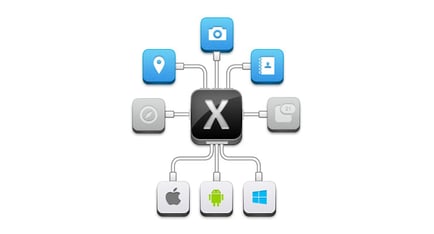Rome wasn’t built in a day, and neither is a good, cross-platform mobile application. It can be built in a few weeks, however, if you have the right tools and experience. When you need a quality, high performance app that works seamlessly on Android, Windows and iOS, Xamarin is a good option to start with. As a fairly young tool, Xamarin uses .NET/C#, native libraries and is based on the Microsoft technology stack. The existing community of more than 1.4 million developers (and growing dramatically!) makes it a safe bet that it’s not going away anytime soon. Quality output begins with quality input, however, which means following the right steps is essential for a successful Xamarin project.

Perhaps you’ve decided that a development environment such as Xamarin is the solution to your headaches. Maybe. But before embarking on a Xamarin project for the first time, there are a few things you should think about:
Some common section headers include:
1. Decide what your Xamarin project goals are
One of Xamarin’s strengths lies in its high rate of code re-use across platforms—Xamarin claims 75% of your code can be re-used. It’s what you do with the other 25% that can get you in trouble.
- How similar do you want (or need) you app to be between platforms?
- Do you try to make them exactly alike, thus ignoring the really cool features available in one or the other (or both)?
- Do you try to exploit the strengths of each, thereby complicating your testing and documentation?
Weighing the tradeoffs and establishing those design principles now can save you a good deal of strife later on.
2. Explore and experiment first
Before launching a production (read: time-limited) project for an app with real customers, play around with something simple first to get accustomed to the Xamarin environment, its capabilities, and its shortcomings. It’s much easier to get comfortable with it when there’s no pressure to produce something that’s actually useful.
Once you’ve explored the Xamarin development environment and the available support, you will be in a much better position to start an actual development project. And you’ll be pleased with how easy it is to design and code for multiple platforms in one project and keep the various versions in sync. Xamarin stays up to date with the latest APIs for Android, iOS, and Windows Mobile, so you needn’t fear missing out on new features and bug fixes.
These steps should give you a solid foundation on which to design, build, test, and deploy your cross-platform apps. Happy coding!
3. Identify Technical Requirements
Several factors need to be taken into account when you’re starting a new Xamarin project. Identify whether the app is going to run on Android, iOS and Windows, and which versions of the operating systems will support it. You’ll need to consider dependencies such as hardware types, server collaboration, any third-party software it needs to integrate with, and how you’re going to handle updates and maintenance. This last is especially important if the app delivers up-to-date information to users, for example changes in product lines, pricing or events.
4. Determine the Specs
It’s advisable to create your specifications as a high level document initially, because chances are good the final product will change as new opportunities present themselves. Your app developer will need specs that include:
- screenshots or diagrams of envisaged screens,
- corporate identity requirements such as fonts, logos and color specs,
- required language capabilities,
- search keywords to use,
- app categories where applicable, and
- copyright information.
Most app functionality offers additional benefits and quick wins, but these might only become clear once you review the architecture of the app.
5. Set the Timetable
Creating the timetable for your app is done in conjunction with your developer, because it depends on programs used, the developer’s workload and other issues such as availability of your graphic design team. Since a Xamarin project is a collaborative process between client and developer, if you have comprehensive MVP documents and all related information available it could be completed in 60 days or less. Keep in mind the timetable needs to include testing, as well as submission to the app stores if that applies.
A good quality, cross-platform mobile app can do wonders for your company’s image in the marketplace, as well making it simpler for your clients to engage with you. Responsive website design simply doesn’t solve the “mobile first” problem, and native apps remain the best bet for a smoother customer experience than web apps. Take the first step today towards your new mobile app with a Xamarin project aimed at keeping your business at the cutting edge of technology.
Xamarin is a powerful tool with seemingly endless capabilities. AndPlus uses Xamarin among it's many frameworks to create complex mobile applications for any industry. Interested in working with an expert team to build YOUR cross platform application? Contact AndPlus by filling out the form below!
















